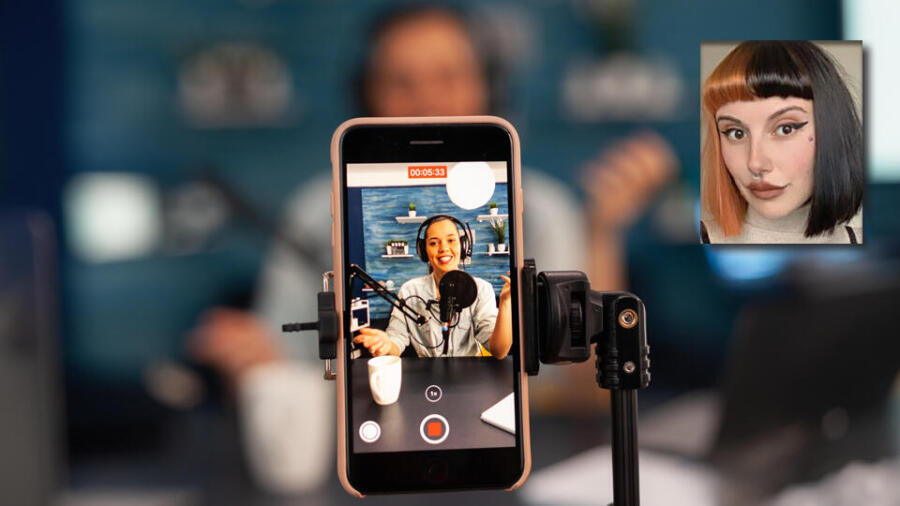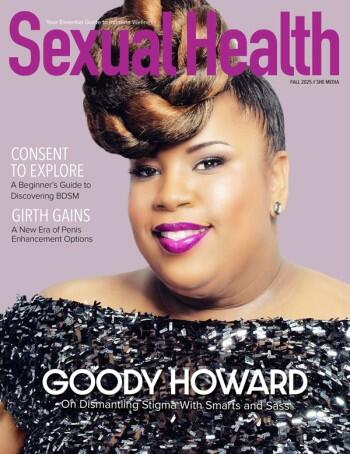Welcome to the “seggsual” wellness industry, also known as the “s//xual wellness industry” or “s-eggs-ual” wellness industry. Why so many aliases? Because mentioning what we actually do can torpedo our marketing efforts on social media platforms. So, how can pleasure brands approach content creation to effectively drive social media campaigns — without running afoul of restrictions on what we can say and show?
Social Media: The Only Game in Town
Maintaining a strong presence requires making videos that educate, entertain, empower — and engage.
First, let’s address why this matters so much. Instagram, Facebook and TikTok have shifted the landscape, reshaping how the public accesses entertainment and information. According to a study by Forbes, 90% of 18-to-24-year-olds now prefer streaming over traditional broadcast television. With more than 5 billion users estimated to be on social media, it is imperative that brands maintain a strong presence on these platforms, since that is where pretty much everyone is spending their time.
Maintaining a strong presence requires making videos that educate, entertain, empower — and engage. Engagement is at the core of successful social media content creation. Video content must grab and hold viewers’ attention while building brand awareness and connection. Platform algorithms then reward successful creator accounts with higher visibility, the Holy Grail of brand marketing. Simple, right?
But, of course, there’s a catch. Let’s get into how platforms’ content restrictions make marketing in the sexual wellness space a very challenging task.
The Great Purge
In 2023, Meta led a mass deplatforming of sex-positive accounts, sending a very clear message about what kind of content is unwelcome on Facebook and Instagram. Under Meta’s prohibitive restrictions, and those of other platforms, content that violates policies about profanity or explicit language can get an account shadow-banned, limiting how many people can see your content.
This can be catastrophic, severely diminishing an account’s reach and stunting its growth — and repeated flagging can even result in the deletion of the entire account. That scenario is obviously a marketing nightmare, as it means losing access to a hard-earned audience and jeopardizing the brand’s positioning on social media. Yet this is the situation that has hamstrung many creators and brands within the sexual wellness industry.
So, how do we create engaging content without violating these policies?
Watch What You Say
The first line of defense is, unfortunately, self-censorship. Sex educators and brands that operate within the sexual wellness industry need to avoid language that may trigger an algorithmic red flag. To better understand which words fall into this category, check lists of banned hashtags. Then, camouflage such terms by replacing letters with numbers or using phonetic spelling. TikTok users have long used such methods to avoid restrictions around terms the platform deems offensive. For instance, “sex” became “seggs” and “dying” became “unaliving.” TikTok users have quickly adapted, instinctively understanding the meanings of this altered language.
While this approach can help you communicate your message while flying under the algorithmic radar, be aware that platforms are also constantly evolving and sometimes these strategies have limited success. Also remember to stay on top of flagged material, removing it as soon as it is highlighted to avoid further action against the account.
Nudge Nudge, Wink Wink
A second option is to make content seem superficially vanilla and innocent, replacing direct references to products’ functions with heavy innuendo. For example, some sex toy brands market themselves on Instagram as “electric toothbrushes” or “muscle massagers.” This cheeky inside joke not only avoids restriction violations but also builds a sense of camaraderie with followers, curating a feeling of “them versus us” with a knowing wink of the eye.
When it comes to visuals, those same restrictions preclude overtly showing sex toys that are anatomically realistic or phallic. Some sex toy brands, such as Cute Little Fuckers, have grinding toys shaped like aliens and starfish. These are great for content creation, since they are not automatically recognizable as pleasure products.
Give It Everything You’ve Got
The constraints imposed by social media platforms can leave sexual wellness brands operating with one hand tied behind their back, due to forces beyond their control. To help compensate for that disadvantage, make sure that every aspect of your content that you actually can control is firing on all cylinders.
For instance, tracking and riffing on the latest memes and trends can help make your content more relatable and sharable. Content that is emotive, funny and/or educational also has great sharing potential. Educational content should offer insight or insider knowledge, establishing the brand as an authority and projecting expertise. Having an in-house expert can help establish credibility. Gigi Engle acts as SexToys.co.uk’s in-house sex expert, lending quotes for media pitches and putting a human face on the site’s marketing. Finally, ensure that you are utilizing all of the platform’s functionalities, whether it’s stickers, GIFs, polls or questions. Ensure you have a clear call to action, channel traffic to landing pages and actively encourage users to follow your account.
By following a cohesive and comprehensive strategy, you can navigate restrictions on social media platforms, get past constraints and be truly creative in your social media output. So don’t be disheartened by these limitations; instead, use them as a framework to think outside the box.
Scarlett Ward is the affiliate and influencer manager at Little Leaf Agency, a PR and communications agency dedicated to sexual wellness.








